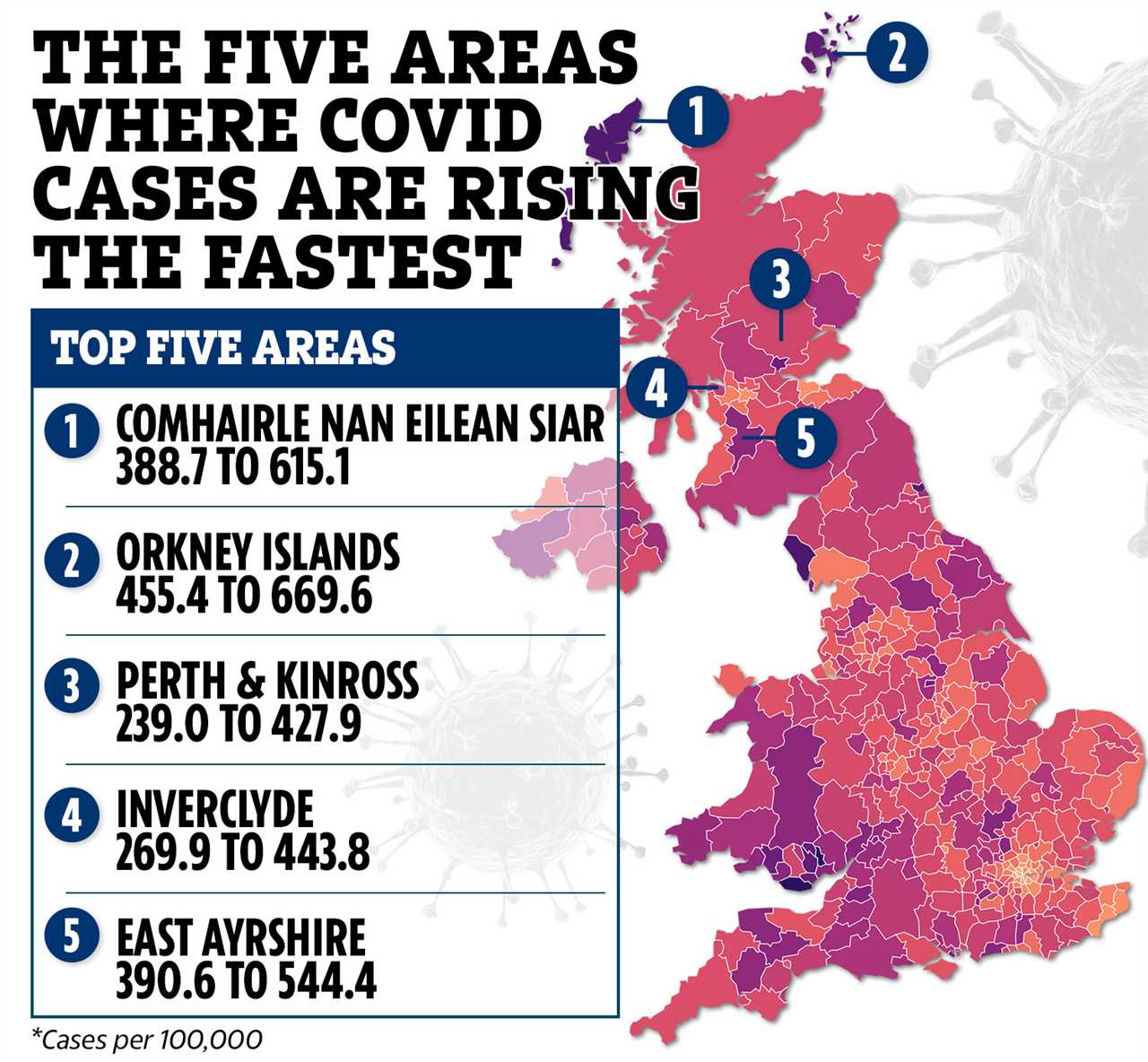CORONAVIRUS infections are still on the rise and this interactive map reveals how infected your local area is.
Out of the 377 local authorities in the UK, 53 places have seen a rise in infection rates.
It comes as experts today warned that Covid could continue to ruin Christmas for five years.
While just 53 places have seen a rise in infections in the last seven days, Professor Tim Spector of King’s College London, and the lead on the ZOE Symptom Tracker app, said we should get complacent with the virus.
At present all ambulance trusts in England are currently on a high level of alert and are under significant strain as winter pressures start to mount.
In the UK 322 areas have seen a fall in coronavirus cases in the seven days up to November 6, with the map above showing most recent infections.
Covid is currently taking up around eight per cent of hospital beds in the UK and the NHS is continuing to urge people to book their jabs and boosters to prevent the NHS coming under even more pressure this winter.
Trusts around the country are ‘on their knees’ as patients continue to wait for hours to receive care.
The Orkney Islands in Scotland currently has the highest rate of infection in the UK, with 150 new cases in the seven days to November 6, the equivalent of 669.6 per 100,000 people.
This is up from 455.4 in the seven days to October 30.
Torfaen in Wales has the second highest rate, down from 747.6 to 666.4, with 632 new cases.
Vale of Glamorgan in Wales has the third highest rate, down from 767.2 to 635.6, with 860 new cases.
Copeland in Cumbria has the highest rate in England (598.2) and Fermanagh & Omagh has the highest rate in Northern Ireland (548.8).
Yesterday it was reported that a cluster had emerged in parts of Scotland and that is still the case, with five areas in the nation have seen the biggest week on week rises.
Comhairle nan Eilean Siar is up from 388.7 to 615.1 and the Orkney Islands has also jumped from 455.4 to 669.6.
Perth & Kinross is up from 239.0 to 427.9, while Inverclyde has also jumped from 269.9 to 443.8.
East Ayrshire has also witnessed an increase in cases, going from 390.6 to 544.4.







